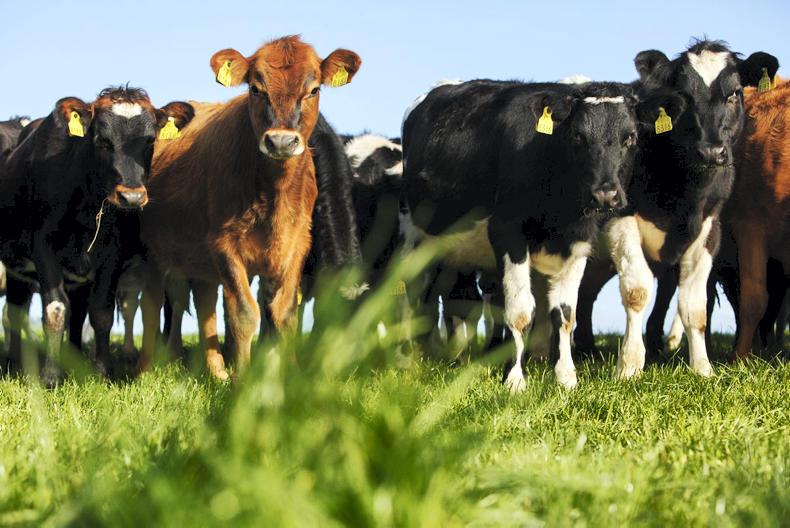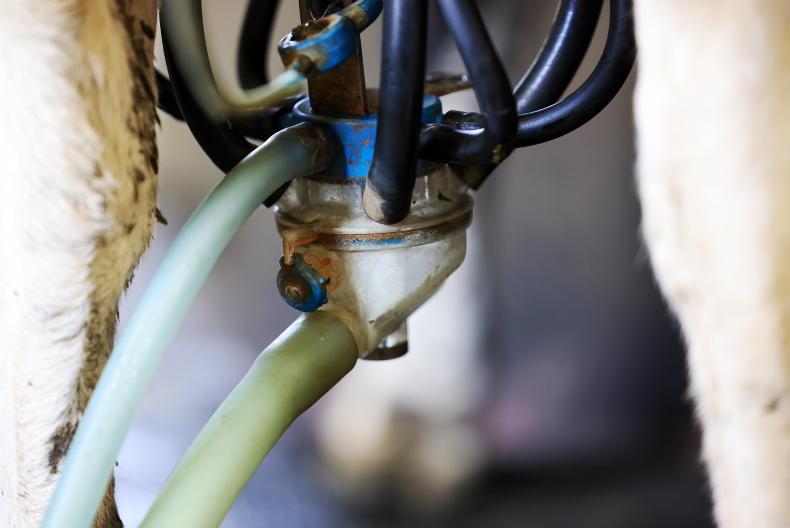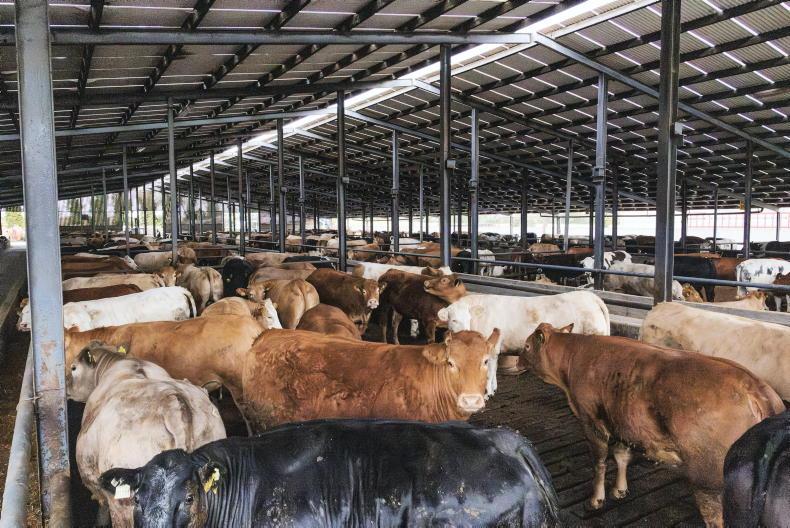Irish dairy farmers are hugely fortunate to have retained control of the processing and marketing of their milk. We only have to look to the beef sector for comparison. In dairying, a processing sector and route to market developed around the most efficient and profitable production model at farm level: a seasonal grass-based system. It is the opposite for beef. The production model is shaped from the top down by processors and retailers focused on maximising margins rather than farm profit.
Dairy farmers should not underestimate the extent to which the foresight shown by the farmers that established the co-operative structure in the late 19th century is contributing to the profitability of their business today.
Nor can the younger generation of dairy farmers ignore the extent to which the long-term future profitability of their business will depend on protecting the co-op structure. In the same way as these young farmers must develop a long-term strategic plan for their own business, they must also actively engage in helping shape the future direction of their co-op through participation in regional committees and board structures.
The future success of any co-op structure will be to safeguard the trust and support of its membership. Central to this is the ability of the board to ensure that the membership has complete transparency around all aspects of business performance.
While milk price returned to farmers is certainly not the only parameter against which to assess performance, it is a critical barometer. Currently, transparency is provided through the Ornua monthly Purchase Price Index (PPI), the monthly milk league and the annual Irish Farmers Journal/KPMG manufacturing milk price review.
As the Farm to Fork strategy recognises the importance of working together, dairy is moving in the opposite direction
The Irish Farmers Journal and KPMG are currently engaging with co-ops in relation to completing the manufacturing milk price review for 2019. The aim of the review is simple: to give farmers an independent and transparent benchmark against which to assess the price paid for manufacturing milk by individual processors.
As pricing models evolve every year, those participating always look to engage and clarify procedures. It is impossible to satisfy all demands. However, some are looking for new measures that have validity.
But the Irish Farmers Journal and KPMG are committed to protecting the transparency and integrity of the manufacturing milk price league. It would be difficult to see a situation where this objective was not aligned to co-op chairs and board members committed to delivering transparency to their farmer suppliers.
Meanwhile, a review of the Ornua PPI is understood to be ongoing. Recently, Jack Kennedy carried out an analysis showing that in cent-per-litre terms, the milk price returned to processors through the PPI was higher for 11 months in 2019 than the actual price co-ops paid to their farmer suppliers. This clearly questions the extent to which processors are creating value through their own routes to market. Especially when we consider that in 2019, Ornua returned a further €26m to co-ops through a member bonus and that Ornua does not handle some specialised high-value products, such as infant formula.
Does the inability of co-ops to even match the Ornua price reflect the level of value destruction that has taken place in the infant formula market – mainly by co-ops competing directly with each other on price?
Similarly there are reports that cheddar cheese prices in Japan have collapsed for the same reason, with Irish co-ops competing head-on. It is ironic that as the new Farm to Fork strategy recognises the importance of farmers working together in the market, our dairy industry is moving in the opposite direction.
Unfortunately, while co-op CEOs have rightly demanded transparency on how Ornua is adding value, they do not appear willing to have the same light shone on their own performance. A full and transparent explanation as to the reasons for the price disparity between PPI and the milk price returned to farmers has not yet been provided. Instead, the response has been to carry out a review of the PPI with a focus on increasing the processing charge within the formula used when translating market prices back to cent per litre.
The significance of the move should not go unnoticed. Farmer representatives on the boards of Ornua and the co-ops must question why it is necessary at a time when increased volumes and constituents should in fact be helping dilute fixed costs. Is it time to revisit the need for a review of processing costs across co-ops? Simply changing the formula to address the price discrepancy sets a dangerous precedent.
Also this week, we report on plans for Dairygold suppliers to increase output by 232m litres. Careful consideration is needed as to the impact on farm profitability of continuing to grow output while co-ops appear to be struggling to add significant value to product sold outside of Ornua and at the same time reporting higher processing costs.

\ Jim Cogan
COVID-19: China imposes suspension on imports from affected factories

Chinese authorities have reacted to the recent outbreak of COVID-19 in Beijing by requiring that the suppliers of imported produce notify and suspend exports if they have cases in their factory. This has led to the suspension of Irish pigmeat to China from one factory.
This is a global practice for exporters to China. National authorities in South American countries have been informing approved factories of the requirement to notify and suspend trade if COVID-19 cases are present. Suspensions are temporary and it is understood exports can recommence once the Chinese authorities are persuaded risks of COVID-19 contamination in exports are eliminated.
The EU has raised the issue with China, pointing out that neither the WHO, World Organisation for Animal Health (OIE) nor the European Food Safety Authority (EFSA) have found any evidence of food transmitting the virus. Despite this, the importer will dictate the terms for doing trade and it is important that our industry and the Department provide assurances to China, given it is our second most important market for pigmeat.
The wider concern is that this creates a precedent that could be followed by other countries and for other agricultural produce. Trade in agricultural produce is already seriously disrupted and any further closure of markets, even temporarily, would add to the problem. It is a given that we should work to eliminate COVID-19 from our factories, but we need also to convince international customers that meat of any type causes no concern to WHO, OIE or EFSA as a carrier of the coronavirus.
€50m beef fund: details required
Elsewhere this week, we outline the various proposals from farm organisations in relation to the distribution of the €50m beef fund. It is important that the minister gives clarity as soon as possible in relation to how the scheme will operate. Otherwise we will have farmers trying to second-guess when to sell animals, creating further distortions in an already uncertain market.
Meanwhile, we have extensive coverage in this week’s paper on the surge in demand and price for beef in Britain. At the equivalent of €4.26-4.36/kg (inc VAT), there is now a €150 to €180 per head differential between the Irish and UK steer price.
As Adam Woods reports, it is welcome to see the UK price increase once again driving the live trade to Northern Ireland. But the differential once again exposes the extent to which Irish farmers are being forced down a steer beef route without securing the market premium necessary to make it profitable.

Beef: Bord Bia and Teagasc at odds over grass-fed standard and PGI
The dispute over the introduction of a grass-fed standard and PGI continues. And rather than trying to address farmers’ concerns, attention seems to have turned towards a blame game.
After confirming its involvement in the modelling process for the beef and dairy standard, Teagasc now appears to be washing its hands of any involvement in the beef standard.
As Amy Forde reports, Bord Bia, in its submission to the European Commission, states that the standard was developed in consultation with Teagasc. Allowing this charade to continue risks undermining the credibility of a grass-fed standard in the marketplace and limits the potential to return higher prices back to the market.
Farmers deserve better.
Irish dairy farmers are hugely fortunate to have retained control of the processing and marketing of their milk. We only have to look to the beef sector for comparison. In dairying, a processing sector and route to market developed around the most efficient and profitable production model at farm level: a seasonal grass-based system. It is the opposite for beef. The production model is shaped from the top down by processors and retailers focused on maximising margins rather than farm profit.
Dairy farmers should not underestimate the extent to which the foresight shown by the farmers that established the co-operative structure in the late 19th century is contributing to the profitability of their business today.
Nor can the younger generation of dairy farmers ignore the extent to which the long-term future profitability of their business will depend on protecting the co-op structure. In the same way as these young farmers must develop a long-term strategic plan for their own business, they must also actively engage in helping shape the future direction of their co-op through participation in regional committees and board structures.
The future success of any co-op structure will be to safeguard the trust and support of its membership. Central to this is the ability of the board to ensure that the membership has complete transparency around all aspects of business performance.
While milk price returned to farmers is certainly not the only parameter against which to assess performance, it is a critical barometer. Currently, transparency is provided through the Ornua monthly Purchase Price Index (PPI), the monthly milk league and the annual Irish Farmers Journal/KPMG manufacturing milk price review.
As the Farm to Fork strategy recognises the importance of working together, dairy is moving in the opposite direction
The Irish Farmers Journal and KPMG are currently engaging with co-ops in relation to completing the manufacturing milk price review for 2019. The aim of the review is simple: to give farmers an independent and transparent benchmark against which to assess the price paid for manufacturing milk by individual processors.
As pricing models evolve every year, those participating always look to engage and clarify procedures. It is impossible to satisfy all demands. However, some are looking for new measures that have validity.
But the Irish Farmers Journal and KPMG are committed to protecting the transparency and integrity of the manufacturing milk price league. It would be difficult to see a situation where this objective was not aligned to co-op chairs and board members committed to delivering transparency to their farmer suppliers.
Meanwhile, a review of the Ornua PPI is understood to be ongoing. Recently, Jack Kennedy carried out an analysis showing that in cent-per-litre terms, the milk price returned to processors through the PPI was higher for 11 months in 2019 than the actual price co-ops paid to their farmer suppliers. This clearly questions the extent to which processors are creating value through their own routes to market. Especially when we consider that in 2019, Ornua returned a further €26m to co-ops through a member bonus and that Ornua does not handle some specialised high-value products, such as infant formula.
Does the inability of co-ops to even match the Ornua price reflect the level of value destruction that has taken place in the infant formula market – mainly by co-ops competing directly with each other on price?
Similarly there are reports that cheddar cheese prices in Japan have collapsed for the same reason, with Irish co-ops competing head-on. It is ironic that as the new Farm to Fork strategy recognises the importance of farmers working together in the market, our dairy industry is moving in the opposite direction.
Unfortunately, while co-op CEOs have rightly demanded transparency on how Ornua is adding value, they do not appear willing to have the same light shone on their own performance. A full and transparent explanation as to the reasons for the price disparity between PPI and the milk price returned to farmers has not yet been provided. Instead, the response has been to carry out a review of the PPI with a focus on increasing the processing charge within the formula used when translating market prices back to cent per litre.
The significance of the move should not go unnoticed. Farmer representatives on the boards of Ornua and the co-ops must question why it is necessary at a time when increased volumes and constituents should in fact be helping dilute fixed costs. Is it time to revisit the need for a review of processing costs across co-ops? Simply changing the formula to address the price discrepancy sets a dangerous precedent.
Also this week, we report on plans for Dairygold suppliers to increase output by 232m litres. Careful consideration is needed as to the impact on farm profitability of continuing to grow output while co-ops appear to be struggling to add significant value to product sold outside of Ornua and at the same time reporting higher processing costs.

\ Jim Cogan
COVID-19: China imposes suspension on imports from affected factories

Chinese authorities have reacted to the recent outbreak of COVID-19 in Beijing by requiring that the suppliers of imported produce notify and suspend exports if they have cases in their factory. This has led to the suspension of Irish pigmeat to China from one factory.
This is a global practice for exporters to China. National authorities in South American countries have been informing approved factories of the requirement to notify and suspend trade if COVID-19 cases are present. Suspensions are temporary and it is understood exports can recommence once the Chinese authorities are persuaded risks of COVID-19 contamination in exports are eliminated.
The EU has raised the issue with China, pointing out that neither the WHO, World Organisation for Animal Health (OIE) nor the European Food Safety Authority (EFSA) have found any evidence of food transmitting the virus. Despite this, the importer will dictate the terms for doing trade and it is important that our industry and the Department provide assurances to China, given it is our second most important market for pigmeat.
The wider concern is that this creates a precedent that could be followed by other countries and for other agricultural produce. Trade in agricultural produce is already seriously disrupted and any further closure of markets, even temporarily, would add to the problem. It is a given that we should work to eliminate COVID-19 from our factories, but we need also to convince international customers that meat of any type causes no concern to WHO, OIE or EFSA as a carrier of the coronavirus.
€50m beef fund: details required
Elsewhere this week, we outline the various proposals from farm organisations in relation to the distribution of the €50m beef fund. It is important that the minister gives clarity as soon as possible in relation to how the scheme will operate. Otherwise we will have farmers trying to second-guess when to sell animals, creating further distortions in an already uncertain market.
Meanwhile, we have extensive coverage in this week’s paper on the surge in demand and price for beef in Britain. At the equivalent of €4.26-4.36/kg (inc VAT), there is now a €150 to €180 per head differential between the Irish and UK steer price.
As Adam Woods reports, it is welcome to see the UK price increase once again driving the live trade to Northern Ireland. But the differential once again exposes the extent to which Irish farmers are being forced down a steer beef route without securing the market premium necessary to make it profitable.

Beef: Bord Bia and Teagasc at odds over grass-fed standard and PGI
The dispute over the introduction of a grass-fed standard and PGI continues. And rather than trying to address farmers’ concerns, attention seems to have turned towards a blame game.
After confirming its involvement in the modelling process for the beef and dairy standard, Teagasc now appears to be washing its hands of any involvement in the beef standard.
As Amy Forde reports, Bord Bia, in its submission to the European Commission, states that the standard was developed in consultation with Teagasc. Allowing this charade to continue risks undermining the credibility of a grass-fed standard in the marketplace and limits the potential to return higher prices back to the market.
Farmers deserve better.













SHARING OPTIONS